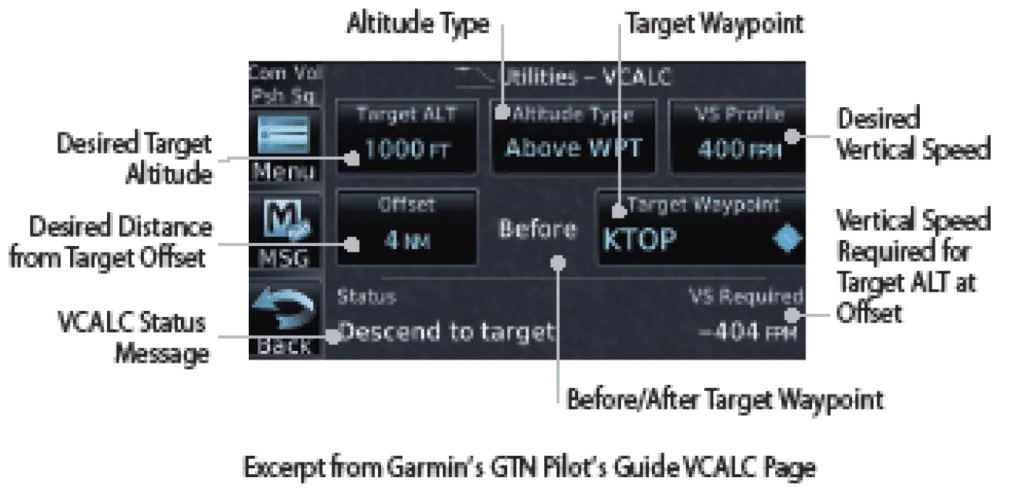Every year, the Aviation Safety Reporting System staff selects 50 of the most profound reports in a category, here Controlled Flight Toward Terrain, and publishes them. For 2022, eight relate to IFR the GA way. Lightly edited for clarity and grammar, let’s learn from their mistakes.
Who Said What?
A CFII was conducting training with a student in a Piper PA-28, operating under instrument flight rules in good VMC. The flight was cleared for an approach, and as usual, ATC requested their intentions afterward. The CFII replied that they would fly a low approach, then fly runway heading and proceed to their destination when able. The Approach controller acknowledged, then handed the Cherokee off to CTAF at the nontower airport.
On climb out, they checked back in with Approach but with a different controller. Due to a delay in reaching ATC, the aircraft had to turn left to avoid terrain. This controller said the missed approach was a right turn. The instructor replied they did not request the missed approach but runway heading and a climb. ATC acknowledged and soon asked if they could maintain terrain separation until reaching 5200 feet. Responding affirmatively, the Cherokee was cleared directly to their destination and climbed to 6000 feet.
Later, ATC called regarding a pilot deviation. The instructor had made it clear they would not fly the missed approach, but (s)he felt that neither they nor the controller adequately confirmed the request. Further, their intentions were apparently not shared with the relieving controller. The ASRS report doesn’t speak to how they resolved the deviation possibility, but the fact they filed a report implies a CYA move just in case. Since there was no safety-of-flight issue, that would usually work to the pilot’s benefit.
When a controller relieves another, there is a formal protocol to minimize lapses like this. Even so, no standard list can cover every contingency. As a guideline, in-flight services, such as approval to fly runway heading, are just behind emergencies in priority. It might be worth making a note to remove any doubt about what you requested and were granted.
Listen Up!
An IFR GA aircraft was inbound to Albert Whitted airport in St. Petersburg, Florida (KSPG), and in contact with Tampa Approach. The aircraft was being vectored to SPG and was issued a descent to 3000 feet to get below traffic at 4000. However, the aircraft descended to 2000 where the MVA was 2700 feet. Noticing the error, ATC instructed the aircraft to climb to 3000 and asked why they descended to 2000. Came the reply, “We thought that was what we were issued.” The controller reprimanded himself for not having caught the error sooner, but he was distracted by a recent airspace change that precipitated another issue.
What’s missing here is a recounting of the readback/hearback exchange, which accompanies altitude and heading changes. See “Misheard Mistakes” in IFR, July 2022. When issued an altitude or heading, set it immediately or write it down.
ATC Isn’t Perfect
In a similar case, ATC issued headings to keep an aircraft within an 8400-foot MVA. The aircraft failed to comply and flew into an 8900-foot MVA. The controller chastised himself for not having better airspace/MVA awareness that might have averted the error.
In Utah, a GA aircraft requested an RNAV approach. Salt Lake Center cleared him for the approach over the IAF. The aircraft deviated right and began to descend below the Minimum Instrument Altitude and the published altitudes for the procedure. ATC attempted to reach the aircraft several times and issued a low altitude alert.
The controller then called another aircraft in the area and requested it to reach the aircraft on Unicom. This time the offending aircraft responded and informed ATC that he intended to cancel IFR and proceed visually. The seriously ruffled controller told him, “You need to tell me what you’re doing before you do it, and you can’t switch frequencies without ATC approval.”
The instrument-rated pilot should certainly have known better. This error occasionally occurs when an aircraft on approach is told, “Radar service terminated,” so they can switch to Unicom. But IFR is not canceled until the pilot says “Cancel IFR” at an airport without an operating tower. Further IFR approaches are not allowed until the miscreant pilot or aircraft is found.
How Not to Fly IFR
During their IFR preflight planning, a student asked his instructor to fly the VOR 24 approach at KPOU in Poughkeepsie, New York. He wanted to work on VOR navigation and use the second OBS for this non-precision approach. The flight itself was to be conducted under VFR.
Once airborne, the student requested the approach. The busy controller confused it with the KPOU VOR-A approach. Before they could clarify, he gave the aircraft vectors for an approach, but it wasn’t clear which one. Both student and instructor “were a little confused” but “went with it.” It was time to put on their PIC hats and request clarification, but they didn’t.
Moreover, the attitudes assigned were less than prescribed for each quadrant shown on the approach chart, which is not necessarily abnormal. ATC vectoring altitudes can be lower, and they were in good, if bumpy, VMC. Even so, the nearby hills were a concern. Adding to their uneasiness, they might fly over nearby Sky Acres airport’s traffic pattern if ATC vectored them to final.
There was confusion aboard about executing a vector to final with a dogleg approach. Based on the information presented, the pilots were flying the VOR 24. The intermediate segment is flown on the IGN R-038. Once the aircraft crosses IGN, the aircraft turns right onto R-242 for the final approach segment. This crew was uncertain whether they should join the intermediate segment. Or did ATC want them to intercept the R-242 final approach course before that and continue with vectors? Again, a simple query to ATC would have resolved their confusion.
Even though VFR in VMC, the crew was uncomfortable being low over unfamiliar terrain with hilly topography, in turbulence, and not on a published approach segment until they crossed the VOR. Had it been IMC, the instructor said, “this could have been extremely problematic.” Here, the crew created their problems. When in doubt, ask!
Familiarity Breeds Contempt
The 800-hour instrument-rated pilot planned to depart Palm Springs International Airport at night and elected to file IFR due to the high surrounding terrain. The weather was excellent: unlimited ceiling, visibility better than 10 SM, and light winds. He reviewed the CATHEDRAL ONE Departure Procedure the day before and not long before filing his flight plan, but not immediately before takeoff.
This oversight quickly precipitated a mistake. Departing Runway 31, the pilot maintained a heading of 310 degrees. However, at 400 feet AGL, he began a right turn toward PSP VORTAC instead of climbing straight ahead until crossing the PSP R-268 per the Departure Route Description for takeoffs on Runways 31L/R.
PSP Tower transferred him to SoCal Approach, who reported radar contact. They noted he had “turned early, do you have terrain in sight?” Due to the clear desert VMC conditions, many lights, and no dark spots ahead, he reported “terrain in sight.” Approach said nothing further, and the rest of the flight was uneventful.
The pilot admitted to overconfidence in his memory and successful completion of the DP at least twice in the last six months. He confessed slight fatigue due to a long work day and a little get-there-itis because he was flying a passenger to another airport to make a commercial flight. Most significantly, he did not follow the printed procedure card, which calls for reviewing the departure procedure before takeoff.
A well-known aviation adage cautions that your airplane should never take you somewhere your mind hasn’t been five minutes earlier. Our pilot learned that lesson without consequence—this time.
No Pass at PWK
The 30,000-hour ATP was cleared for the RNAV (GPS) RWY 16 approach to Chicago Executive Airport. After passing HIGUH, the IF, he descended prematurely to the MDA, skipping the FAF altitude at PAMME. The tower called with a low altitude alert, and he climbed to an altitude appropriate for his position.
As often happens, he realized his error about the same time as he received the alert. The old pro took ownership: “This was totally an error on my part. I needed to pay more attention to the names of the fixes I was crossing and the altitude I was supposed to be at crossing each fix.”
He added that his GPS was a non-WAAS Garmin 430, so he flew the approach as a non-precision LNAV to MDA. He had scheduled to have a WAAS-capable GPS installed with glide path capability, making a repeat of this error less likely. “In the meantime, I will not make this error again. My life depends on it.”
Wise words, but remember that most approaches are non-precision. As this narrative illustrates, our next hour counts, not the ones behind us.
VNAV Blues
The experienced 2400-hour pilot was flying to Santa Fe Regional Airport. Knowing he would arrive at night, he planned to approach SAF from the Albuquerque area to avoid terrain. To make a safe approach to the airport, he used his Garmin GTN 625’s VNAV feature to set a three-degree glide path to a point one NM from the airport at 1000 feet AGL.
When he reviewed the added VNAV waypoint in the flight plan on the GTN, it auto-filled a crossing altitude of 6349 feet MSL. He understood this to be the MSL altitude for 1000 feet AGL.
Approaching the airport, he descended through 7000 feet and noted the terrain illuminated by city lights seemed closer than the approximately 1000 feet he expected. He stopped his descent and climbed visually to an appropriate altitude with the airport in sight. He landed safely.
He soon realized the field elevation was 6349 feet MSL. Later, he repeated his keystroke sequence in the GTN 625. He tried to enter a VNAV waypoint in this order: Enter 1000 feet, then hit the MSL/AGL button. He noted the altitude reverted to zero when he pressed the MSL/AGL button. His machine expected pilots to set the MSL/AGL button first, then enter the numerical value.
Four lessons emerge from his experience. First, all GPS navigators have quirks. Second, always check a VNAV crossing altitude against a chart. Third, ensure you have set what you want before leaving a page. Fourth, screens often require hitting Enter or Save to implement a change.
The order of entering an altitude constraint and its altitude reference should not matter. This issue is resolved according to Garmin’s current GTN 625 Trainer.
Inaction Through Distraction
ATC vectored the GA flight instructor to the ILS/LOC 10 into Waukesha County Airport in Wisconsin. The cloud bases were around 2300 feet AGL, about the same as the 2300-foot FAF for the ILS approach.
The Piper PA-28 had dual GNS 430 GPS units. If the units are identical, the GNSs can cross-fill information from one to the other to minimize pilot workload.

That morning, the pilot encountered an update information error in one GNS 430. When he entered the flight plan for the approach, he expected the units to cross-fill, but due to an apparent software mismatch, the unit sprang a user error message instead. His scan broke as he developed tunnel vision focusing on troubleshooting the problem at the expense of flying the airplane.
Fixated on his attitude indicator and GPS, he failed to realize the glide slope pointer was gradually rising to full scale. A glance at the instrument chart confirmed his error. Consequently, he flew below the final approach fix altitude. Fortunately, they were in VMC when the light bulb came on and he landed safely.
On later reflection, he realized how easily he slipped into this subtle, common blunder with advanced avionics. In his words, “A very avoidable error.”
Takeaways
Three scenarios fall into the “I know better than that” category. Three involve ATC miscommunication. Add one each due to distraction and poor situational awareness. ATC isn’t perfect, either. Let’s resolve not to make it into the 2023 report set.





